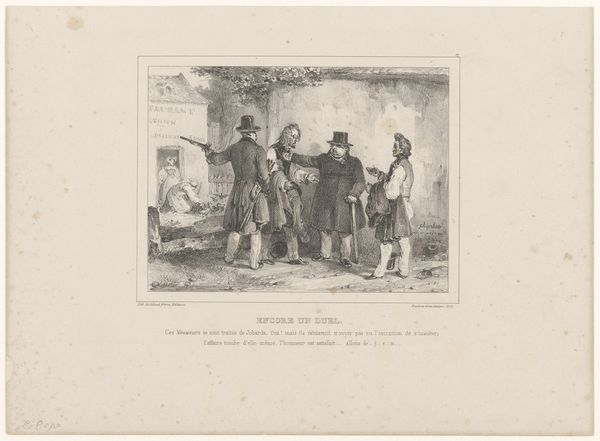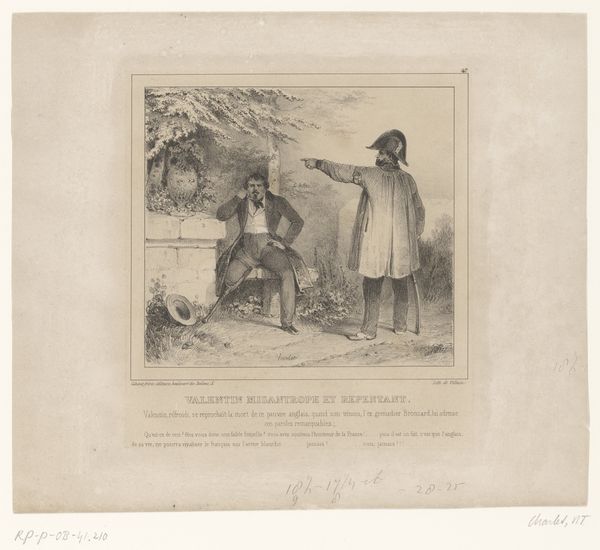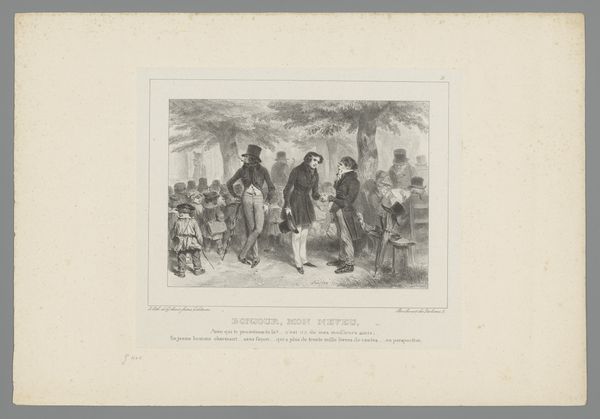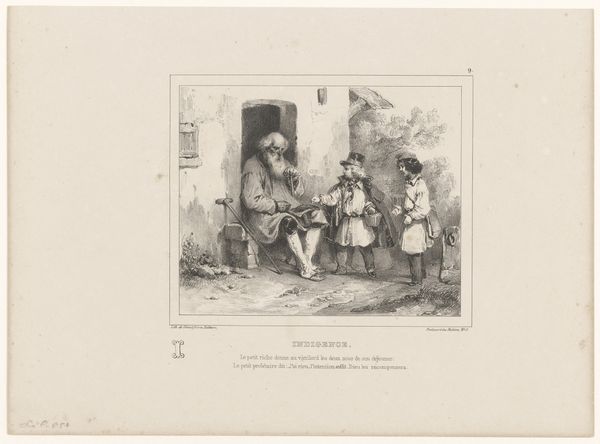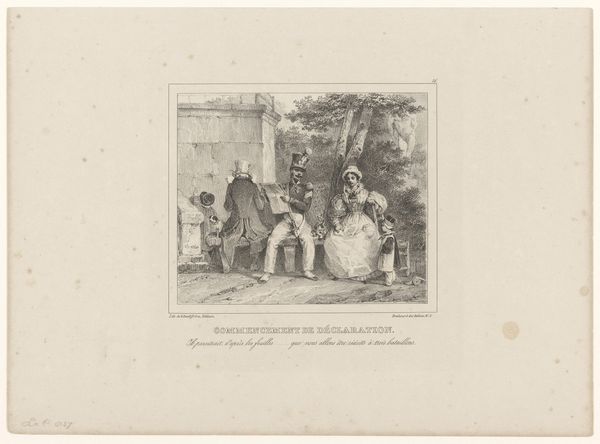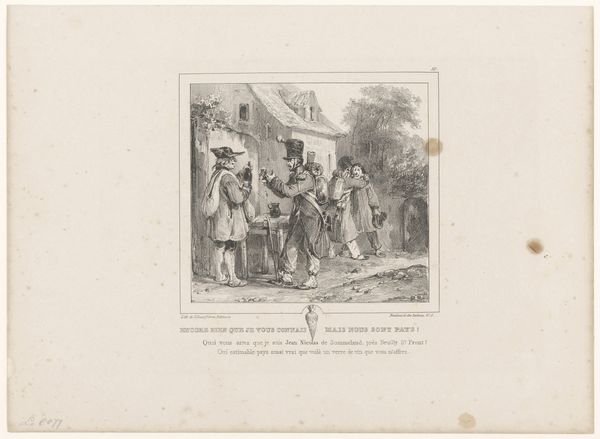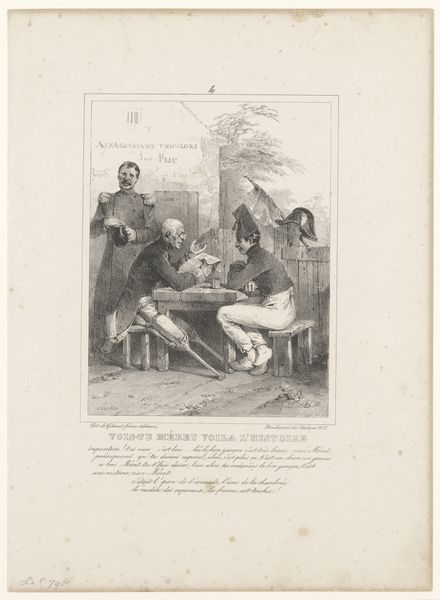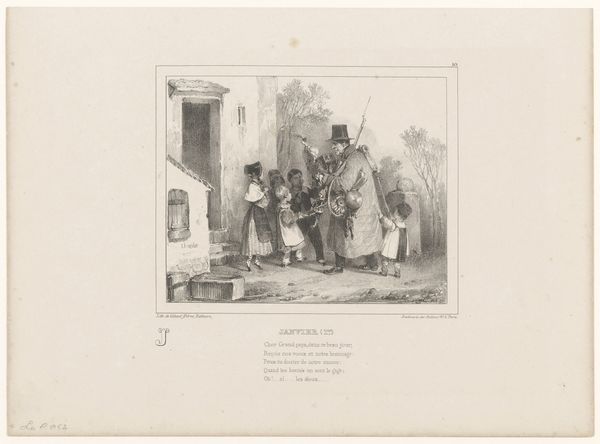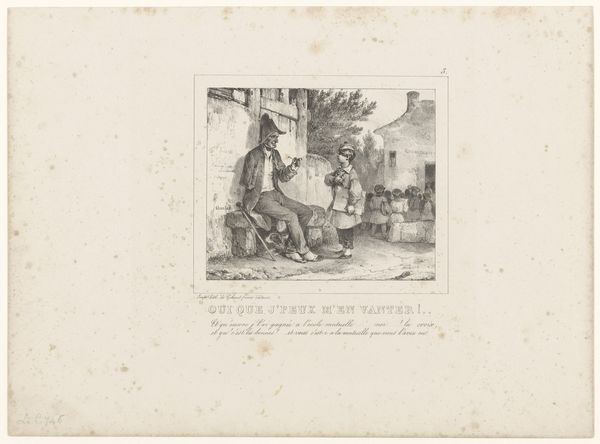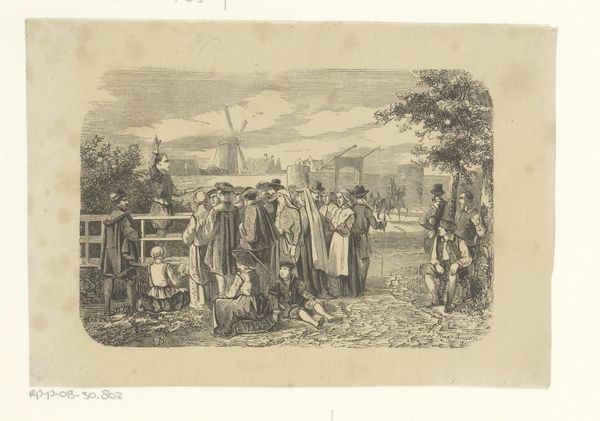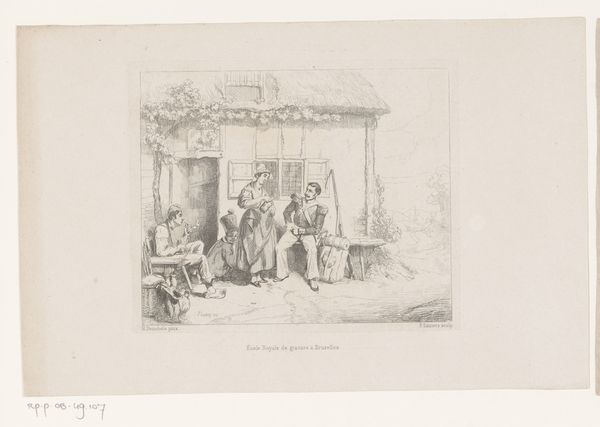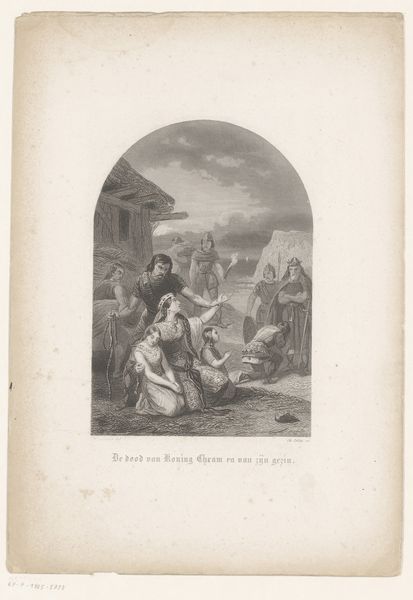
Vrijbuiter stoort twee arbeiders, een soldaat en een kind bij de maaltijd 1834
0:00
0:00
nicolastoussaintcharlet
Rijksmuseum
drawing, print, engraving
#
pencil drawn
#
drawing
# print
#
old engraving style
#
romanticism
#
genre-painting
#
engraving
Dimensions: height 247 mm, width 338 mm
Copyright: Rijks Museum: Open Domain
Curator: This print, housed here at the Rijksmuseum, is titled "Vrijbuiter stoort twee arbeiders, een soldaat en een kind bij de maaltijd," which translates to "A Loafer Disturbs Two Workers, a Soldier, and a Child at Mealtime." It's an 1834 engraving by Nicolas Toussaint Charlet. Editor: The composition is quite stark, even with all the figures. The values range from nearly white to almost black with subtle gradients. Notice the contrast in textures. How intentional! Curator: Considering Charlet’s republican sympathies and his association with the Napoleonic legend, it’s tempting to see this "loafer" as a commentary on social disruption. His disruptive arrival, arms spread wide, challenges the established order, represented by the seated, tired worker and the watchful soldier. Editor: That stance is important: look how it echoes the fence posts directly behind. The formal elements, these compositional echoes, create visual rhymes and underscore relationships in the artwork. This mirroring could invite us to analyze relationships beyond face value: Who are we to accept at face value? Curator: Absolutely! And the inclusion of the child clinging to what seems like his father adds another layer. It speaks to the vulnerability of the working class. How societal disruptions affect not just individual comfort, but intergenerational welfare. Editor: And even the line weight suggests different levels of finish: the family almost complete against those sketches, ghosts lurking on the street just outside. The artist invites comparison between inside versus outside, finished and unfinished. The world and its expectations linger and interrupt that domestic life. Curator: Right, Charlet’s artistic choices effectively render a society undergoing immense change. It depicts these social dynamics—leisure, labor, and military—in close proximity to each other. It offers insights into 19th-century class struggles, I think. Editor: Examining the stark, rather unforgiving contrasts and observing the figures’ reactions – or lack thereof – to this disruption reveals much about power, social disruption and expectation within this particular cultural and artistic context. Thank you for illuminating the piece through your lens. Curator: And thank you, your formalist take adds a deeper understanding of Charlet's technique and artistry here.
Comments
No comments
Be the first to comment and join the conversation on the ultimate creative platform.
